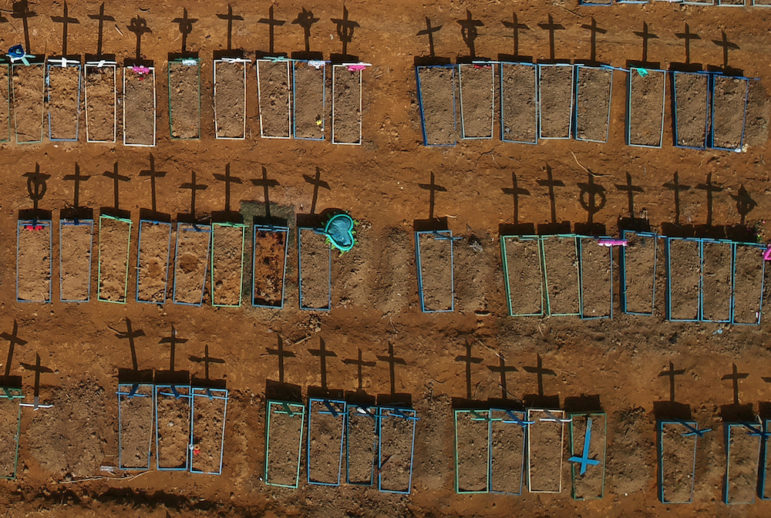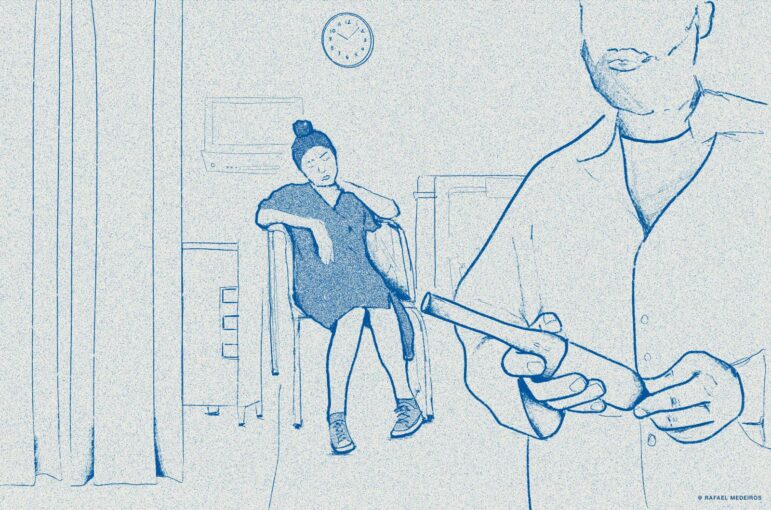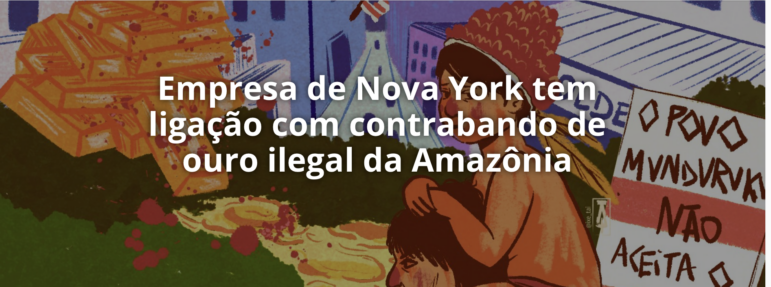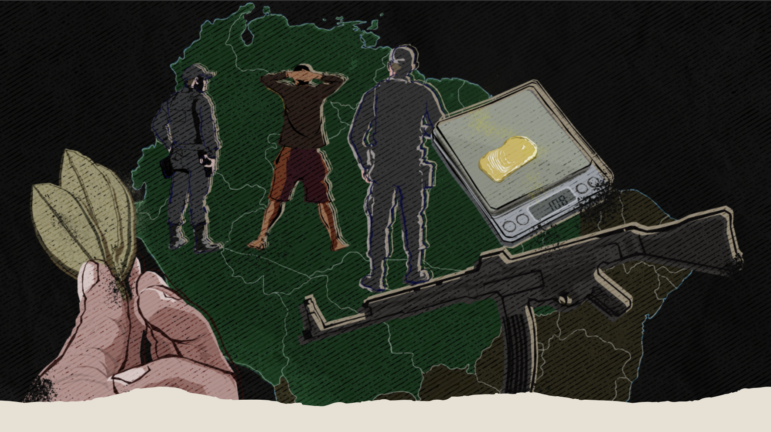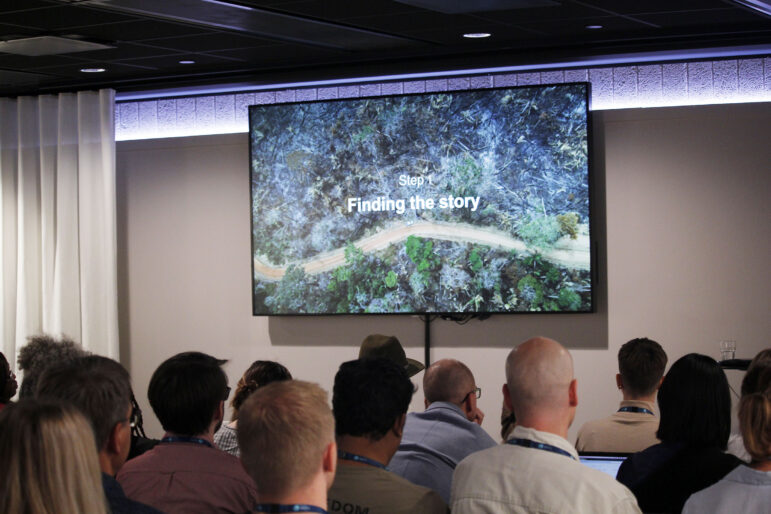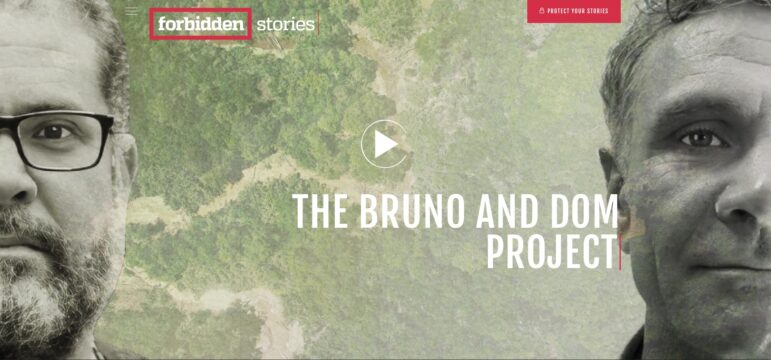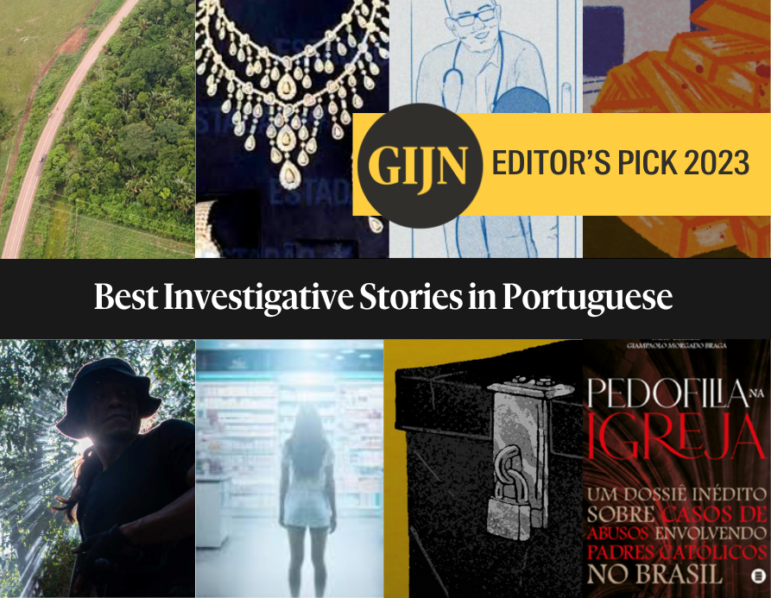

Image: GIJN
Catholic Church Scandal, Personal Pharmacy Data for Sale, and Smuggling Amazon Gold: 2023’s Best Investigative Stories in Portuguese
Read this article in
Being a journalist has never been easy, but journalism in the age of disinformation has been especially challenging for professionals from Portuguese-speaking countries.
The election of a new government in Brazil brought hope of a truce for the country’s journalists, after four years of antagonism during former President Jair Bolsonaro’s time in office. However, the legacy of a government that tried to discredit the press every day will be difficult to erase: public distrust is still very evident, as is the dissemination of false information.
As much as the return of former President Luiz Inácio Lula da Silva to the top office reset the government’s relationship with the press, the country remains polarized. And angry. This raw emotion culminated in an occupation of the federal government buildings, in Brasília, on January 8, 2023 to protest Bolsonaro’s defeat. During this uprising, several media professionals were physically and verbally attacked.
Brazilian reporters are also a constant target of politicians, businesspeople, and other authorities who try to intimidate the press through abusive legal processes. Occasionally it works, and a news report is censored or taken down. But there are also much more serious examples. Brazilian journalist Schirlei Alves was recently sentenced to one year in prison and ordered to pay US$80,000 for defamation, after publishing a report about the humiliation a digital influencer endured when she testified at trial about being a rape victim.
On the other side of the Atlantic Ocean, in Portugal, extremist groups also represent a threat to journalists. That country, despite enjoying robust press freedom, saw its Reporters Without Borders Press Freedom ranking fall in comparison to 2022.
In our curation process, we considered stories from Brazil, Portugal, and Mozambique — including an interesting piece on forced marriage from GIJN’s Mozambican member Mídia Lab — but the final list covers the destruction of the Brazilian Amazon rainforest, sexual abuse in the healthcare sector, and a sampling of the many investigations into the Bolsonaro clan since the end of his government.
Bolsonaro’s Imported Ice (Brazil)
In the year after he left office, Jair Bolsonaro was the subject of numerous investigations. Among the most notable was an exposé by O Estado de São Paulo in March, which revealed that the Bolsonaro government tried to bring into Brazil jewelry valued at US$3.3 million without paying the import tax. The jewelry, which had been presented as a gift to Bolsonaro’s wife, Brazil’s former First Lady, was found in the backpack of an advisor to the president, who was returning from an official visit to Saudi Arabia. Since the jewelry was undeclared, it was seized by airport authorities at Guarulhos International Airport. According to the report, there were eight frustrated attempts by Bolsonaro to recover the precious stones. In the following weeks, the existence of two more sets of jewelry was revealed, which had gone unnoticed by customs and been incorporated into the former president’s “personal collection.” Both were later returned to the federal government. Bolsonaro’s defense states that he “never appropriated or diverted any public assets.”
After the story came out, Federal Police began an investigation into a possible scheme for selling gifts received by Bolsonaro, carried out by his assistants.
Bruno and Dom Project (Brazil)
There was no more harrowing moment for Brazilian journalism in 2022 than waiting for news about British journalist Dom Phillips and Brazilian indigenist Bruno Pereira. It took 10 days between the news of their disappearance and the confirmation that they had been murdered in the Vale do Javari Indigenous land, in the Brazilian Amazon.
To honor the duo’s legacy, The Bruno and Dom Project was launched close to the one year anniversary of the crimes. Coordinated by Forbidden Stories, the initiative involved more than 50 journalists from 10 countries, including GIJN’s Brazilian members Abraji and Repórter Brasil, and outlets such as Amazônia Real, Folha de São Paulo, TV Globo, and the Portuguese outlet Expresso.
The consortium investigated not only the context and circumstances of the murders, but also the topics that Phillips had previously published investigations on, such as land grabbing, deforestation, mining, and illegal fishing. We also highlight the Amazônia Real report on gold mining, which not only points out the environmental and population damage caused by the activity, but also presents the issue from the perspective of the miners, who Phillips saw not just as villains but also as “men desperate to support a family.”
Fragile Walls in Places of Pain (Portugal)
For a year, journalists Ana Patrícia Silva, from Setenta e Quatro, and Cláudia Marques Santos, from Público, investigated the scourge of sexual abuse perpetrated in the places where women in Portugal should feel safest: hospitals and doctors’ offices.
In their five-part series, the pair contacted 47 women, 14 of whom agreed to publicly share their experiences, and spoke to dozens of experts. They also consulted court cases and reports, traveled the country, and explored the legal implications and stigma associated with the problem and the lack of preparation of the country’s institutions to deal with situations like this. They also had to create their own datasets for the project, as they discovered there are no statistics in the country tracking how many sexual abuse cases were registered in public and private health facilities.
Bolsonaro’s Black Box: The Secret Minutes of the COVID-19 Crisis Committee (Brazil)
Thanks to funds raised directly from readers, seven journalists were able to decipher 806 pages, and publish 11 reports, about Bolsonaro’s “Black Box,” a secret stash recording 233 meetings of his COVID-19 Crisis Committee Operations Coordination Center.
The documents, acquired via a public records request by GIJN member Agência Pública, revealed, among other things, how the Ministry of Defense was involved in the production of chloroquine (a medicine with no proven efficacy for the coronavirus), the committee’s strategies to hide the true number of COVID deaths, and the government’s disregard for the outbreak in Manaus, a city in northern Brazil which suffered from a serious lack of oxygen cylinders.
Collagen Craze ‘Drives Deforestation and Rights Abuses’ (Brazil)
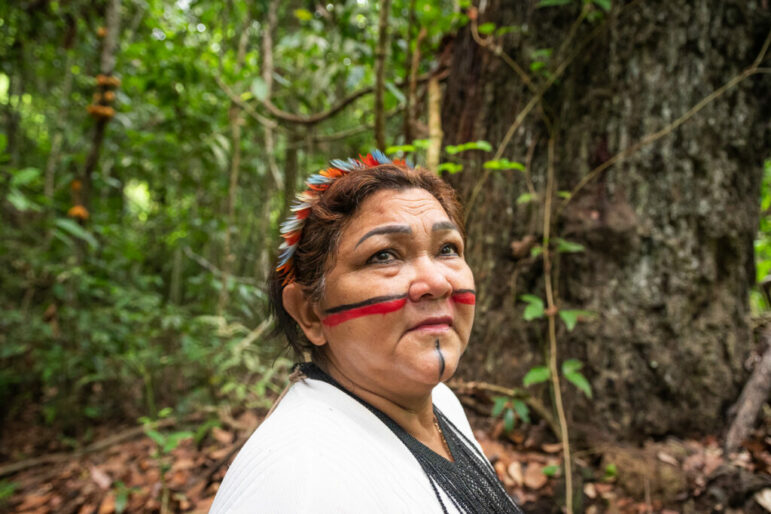
Image: Screenshot of a photograph of Kátia Silene Akrãtikatêjê, leader of the Gavião people, taken by Cícero Pedrosa Neto for O Joio e O Trigo
Deforestation has previously been linked to the creation of pastures to raise cattle for meat export, but this collaborative report from O Joio e o Trigo, The Bureau of Investigative Journalism, the Guardian, and ITV revealed another, lesser-known driver of this environmental issue: collagen production. A fundamental part of health supplements, collagen is a protein whose manufacturing process can be traced back to a complex chain of environmental damage in the Amazon and the Brazilian Cerrado. Among those involved in touting the benefits of collagen are multinational giants and even Hollywood stars. However, unlike beef, collagen is not included in new European legislation that aims to combat deforestation by preventing the import of products whose production generates environmental impacts.
What Does My Pharmacy Know About Me? (Brazil)
In this piece, Brazilian news giant UOL revealed that a leading pharmacy group has stored up to 15 years of personal data about the health of 48 million people in Brazil. This data is then used to sell targeted advertisements in pharmacies, social networks, and on YouTube, based on the profile of the audience the advertiser wants to reach.
The reporter used her own personal data to demonstrate the degree of private information that pharmacies have, which includes information about illnesses, medicines consumed, and even details on an individual’s sexual history. After the piece was published, a government investigation was launched to assess the compliance of the company’s practices with data protection and consumer rights laws.
Pedophilia in the Brazilian Catholic Church (Brazil)
While countries like the United States and Portugal have already confronted public scandals about sexual abuse committed by Catholic priests, little has been known about the extent of such crimes in Brazil, the largest Catholic nation in the world.
Published this year, the book “Pedophilia in the Church: An Unprecedented Dossier on Cases of Abuse Involving Catholic Priests in Brazil,” presents for the first time an overview of cases of sexual abuse committed by Catholic clergy against children and adolescents in Brazil, limiting itself, however, only to the cases that reached the courts.
To write it, two journalists investigated for more than three years and spoke to dozens of people, including victims and relatives, accused or convicted priests, members of the church, authorities, and experts. The book brings together 108 real cases, detailing around 20 of them, and also shows the legal consequences, the impact on the lives of the victims, and the history of impunity of the church in the country.
Where Does Illegally Mined Amazon Gold End Up? (Brazil)
In 2020, authorities seized 77 pounds (35kg) of gold at Manaus airport worth R$10 million (US$2 million). The three men — two Americans and one Brazilian — transporting the haul claimed it was merely melted down from old jewelry — a claim that raised eyebrows given that that quantity of gold would translate into roughly 200,000 wedding rings and as the reporters noted, “not even gathering all the divorced Brazilians in 2022 would be enough to provide so much raw material.” Experts quoted in the story said that, in fact, the gold came from illegal mining, more specifically from Indigenous land in the Amazon.
In partnership with NBC News, Repórter Brasil detailed the route of this illicit ore and showed how mining takes advantage of the lack of supervision and regulations to attract the attention of foreigners. According to the report, there were two destinations for the Manaus shipment: New York City and Istanbul. The latter was destined for a company that supplies gold to big global tech firms. And though this shipment was stopped, the report warned that smuggling of Amazon gold continues to be a profitable business.
 Ana Beatriz Assam is GIJN’s Portuguese editor and a Brazilian journalist. She worked for the newspaper O Estado de São Paulo as a freelancer, mainly covering stories with data journalism. She also works for the Brazilian Association of Investigative Journalism (Abraji) as assistant coordinator of journalism courses.
Ana Beatriz Assam is GIJN’s Portuguese editor and a Brazilian journalist. She worked for the newspaper O Estado de São Paulo as a freelancer, mainly covering stories with data journalism. She also works for the Brazilian Association of Investigative Journalism (Abraji) as assistant coordinator of journalism courses.




